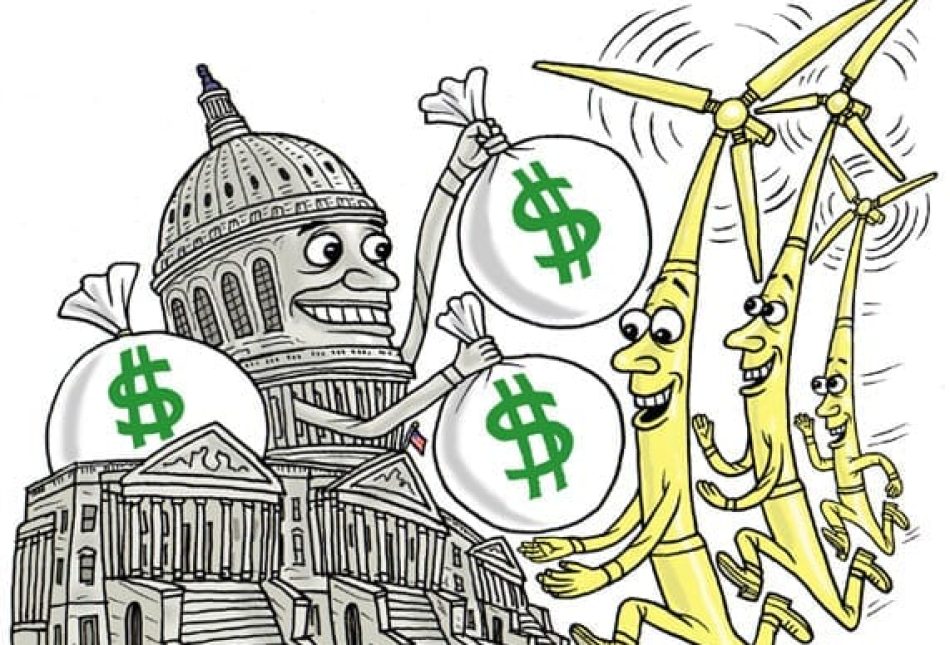Renewables Draining Economy

Under New Mexico’s “Renewable Portfolio Standard” law, regulated electric utilities must derive 15 percent of their electricity needs from renewable sources by 2015, with 20 percent to come from renewable sources by 2020. Starting in late June, Public Service Company of New Mexico will begin holding Integrated Resource Planning public meetings to determine how it will comply with the renewable mandate over the next decade-plus.
Already, organizations like New Mexico Industrial Energy Consumers are expressing concern over rates that have gone up by 24 percent in the past three years.
PNM for its part has requested a 21 percent increase. To be fair, these hikes have not been driven by New Mexico’s foray into renewable energy, which now stands at 6 percent of electricity sales, but mandated increase in more costly renewable sources will result in even greater hikes over time as these mandates take hold.
Unfortunately, not only is New Mexico’s mandate forcing New Mexico utility customers to pay for more expensive “renewable” electricity, the law which originally allowed utilities to use the renewable energy source that made the most economic sense was later changed to force utilities to adhere to specific “mandates-within-a-mandate.”
This additional mandate means that investor-owned-utilities must derive at least 20 percent of their renewable power from wind, 20 percent from solar, 10 percent from “other technologies” like biomass and, by 2015, 3 percent of the electricity must be derived through distributed generation.
So-called distributed generation is yet another onerous requirement on utilities. Specifically, this means that PNM and other investor-owned-utilities such as El Paso Electric must now rely on output from many small energy sources. This has the makings of a paperwork, security and reliability nightmare that will further drive up costs for consumers.
Because of these policies, particularly the solar requirement — although the “other technologies” and distributed generation requirements are problematic — New Mexicans face higher electricity prices. That is, even after significant federal subsidies for renewables, which they are paying for yet again, are priced-into the equation. Nonetheless, the cost of solar thermal electricity, made by using the sun’s heat to boil water and spin a turbine, would be nearly three times that of coal and more than twice that of natural gas.
All of these costs and subsidies are passed on to consumers.
Of course, in today’s difficult economy, with jobs and economic growth taking precedence over supposedly high-minded “green” energy mandates, politicians should realize that unrealistic mandates will kill New Mexico’s economy and hurt the very consumers they are supposed to protect.
Take California as a prime example.
There are many reasons that have caused California to become an economic basket case. Idealism in pursuit of unrealistic environmental goals like the state’s renewable portfolio standard is one. In an executive order issued in November 2008, Gov. Arnold Schwarzenegger set in law goals of generating 20 percent of all electricity from renewable sources by 2010 and 33 percent by 2020. According to the state’s leading utility, PG&E, the state is currently at 12 or 13 percent renewable.
There are really only two viable ways forward at this point.
First, and in the shorter term, regulations and laws must be loosened in order to give utilities the flexibility to determine what sources to derive “renewable” energy from. After all, since wind is half as expensive as solar, shouldn’t PNM and other utilities at least have the freedom to generate energy from the least-costly source?
Ultimately, the public, utility customers and our elected leaders must decide when the economic costs of “renewable” energy exceed benefits. The only logical and, dare I say moral, thing to do is to give consumers the freedom to choose for themselves. If it is worth it for a business or consumer to pay extra for the peace of mind of supporting the growth of renewable energy sources like solar or wind, they should have the freedom to do this.
It is simply unfair and wrong for a minority to use government to force their preferences on the majority of consumers who wish to buy the least expensive and most reliable electricity possible.
Consumers have two opportunities to weigh in on this issue. Once in the upcoming public hearings and again in November when three slots on the PRC are up for election.
Here’s hoping that economic reality will get average citizens and not just renewable energy zealots to engage in the process.
Paul Gessing is president of the Rio Grande Foundation, an independent, nonpartisan, tax-exempt research and educational organization dedicated to promoting prosperity for New Mexico based on principles of limited government, economic freedom and individual responsibility.

